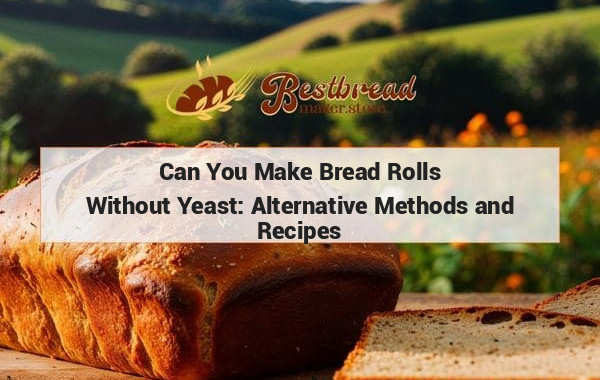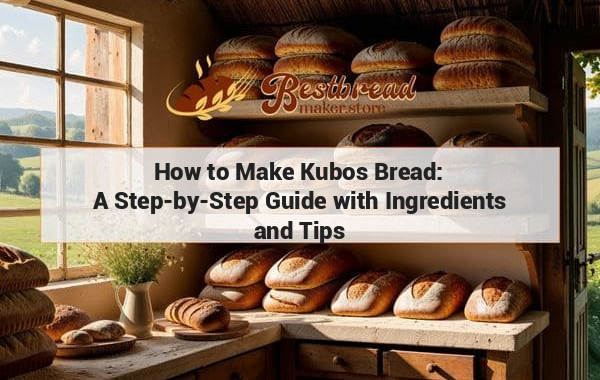What Bread is Low FODMAP? Discover IBS-Friendly Options
Are you struggling with IBS and looking for bread that won't trigger symptoms? Learn what bread is low FODMAP, its benefits, and how to incorporate it into your diet effectively.
What bread is low FODMAP? This question is crucial for anyone navigating the challenges of a low-FODMAP diet, especially those with irritable bowel syndrome (IBS) or other digestive sensitivities. Finding the right bread that meets these dietary needs can significantly affect your health and well-being. To make sure you're getting the best options, let's dive into what makes bread low FODMAP, how to choose the best low-FODMAP bread, and why the right bread maker is a game-changer for your kitchen.
Understanding Low FODMAP Bread: What Makes It Special?

To understand what bread is low FODMAP, it's essential to start with the basics. FODMAP stands for Fermentable Oligosaccharides, Disaccharides, Monosaccharides, and Polyols – short-chain carbohydrates that can be difficult for some people to digest. When these carbohydrates aren't properly absorbed in the small intestine, they can cause symptoms like bloating, gas, and stomach pain, particularly for those with IBS.
Low-FODMAP bread is specifically designed to avoid high levels of these troublesome carbohydrates. Typically, this means using ingredients that are lower in FODMAPs, such as spelt flour or gluten-free grains like rice, quinoa, or buckwheat. For example, sourdough bread made from spelt flour is often a great choice because the fermentation process reduces the FODMAP content.
Why Bread Matters on a Low FODMAP Diet
Bread is a staple in many diets, but for those on a low-FODMAP plan, finding the right type is crucial. The wrong bread can trigger symptoms, making it essential to choose products that align with your dietary needs. With the right bread, you can enjoy a wide range of meals, from sandwiches to toast, without compromising your health.
Top Choices for Low FODMAP Bread

When it comes to selecting low-FODMAP bread, there are several options to consider. Each of these has been shown to be gentler on the digestive system while still providing the satisfying taste and texture you crave.
Sourdough Spelt Bread
Sourdough spelt bread is often recommended for those on a low-FODMAP diet. The fermentation process used in making sourdough bread reduces the FODMAP content, making it easier to digest. Spelt, an ancient grain, is naturally lower in FODMAPs compared to modern wheat varieties.
Gluten-Free Bread
Gluten-free bread is another excellent choice. While gluten itself isn't a FODMAP, many gluten-free breads are made from low-FODMAP ingredients like rice, quinoa, and buckwheat. These breads provide a safe and delicious option for those who need to avoid both FODMAPs and gluten.
Rye Bread
While rye bread might seem like an odd choice, certain types of rye bread, particularly those made with a longer fermentation process, can be lower in FODMAPs. It's important to look for specially marked low-FODMAP rye bread if you choose this option.
Homemade Low FODMAP Bread
Making your own bread at home gives you complete control over the ingredients, allowing you to avoid high-FODMAP ingredients entirely. By using a bread maker, you can experiment with different low-FODMAP flours and recipes, ensuring that your bread meets your dietary needs.
Choosing the Best Bread Maker for Low FODMAP Bread

Investing in a high-quality bread maker can be a game-changer for anyone on a low-FODMAP diet. Not only does it allow you to make fresh, customized bread at home, but it also ensures that you know exactly what's going into your bread. Here are some key features to consider when choosing a bread maker:
Customizable Settings
Look for a bread maker with customizable settings that allow you to adjust the kneading, rising, and baking times. This flexibility is crucial when working with alternative flours that may require different handling than traditional wheat flour.
Gluten-Free Settings
If you plan to make gluten-free low-FODMAP bread, a bread maker with a dedicated gluten-free setting can simplify the process. These settings are specifically designed to handle the unique characteristics of gluten-free dough, resulting in better texture and rise.
Size and Capacity
Consider the size and capacity of the bread maker, especially if you're baking for a family. Some models allow you to bake different loaf sizes, which can be convenient if you only need a small amount of bread at a time.
Ease of Use
A user-friendly bread maker with intuitive controls can make the bread-making process much more enjoyable. Look for models with clear instructions, easy-to-read displays, and straightforward operation.
The Importance of Quality Ingredients in Low FODMAP Bread
Even with the best bread maker, the quality of your ingredients plays a significant role in the final product. When choosing ingredients for low-FODMAP bread, here are a few tips to keep in mind:
Use High-Quality Low FODMAP Flours
The flour you choose will be the foundation of your bread, so it's essential to use high-quality, low-FODMAP flours. Spelt flour, rice flour, and quinoa flour are all excellent choices. Ensure that the flour is fresh and stored properly to maintain its quality.
Avoid High FODMAP Additives
When baking low-FODMAP bread, avoid additives that can increase the FODMAP content. This includes certain types of sweeteners, preservatives, and other ingredients that might be added to commercial bread. By making your own bread, you can eliminate these potential triggers.
Incorporate Nutrient-Rich Ingredients
To boost the nutritional value of your bread, consider incorporating low-FODMAP seeds, nuts, or grains. For example, chia seeds, flaxseeds, and oats can add fiber, protein, and healthy fats to your bread without increasing the FODMAP content.
Practical Tips for Baking Low FODMAP Bread at Home
Baking low-FODMAP bread at home can be a rewarding experience, especially when you have the right tools and ingredients. Here are some practical tips to help you get started:
Start with Simple Recipes
If you're new to baking bread, start with simple recipes that require minimal ingredients and steps. As you become more comfortable with the process, you can experiment with more complex recipes and ingredient combinations.
Be Patient with the Process
Baking bread, especially with alternative flours, can require some patience. Low-FODMAP flours may behave differently than traditional wheat flour, so be prepared for some trial and error. Keep experimenting until you find the right balance of ingredients and techniques.
Store Bread Properly
Low-FODMAP bread made at home is often free of preservatives, so it's essential to store it properly to maintain freshness. Store your bread in an airtight container at room temperature for a few days or freeze it for longer storage.
Experiment with Flavors and Textures
Don't be afraid to get creative with your low-FODMAP bread. Try adding different herbs, spices, or seeds to your dough to create unique flavors and textures. This can make your bread more enjoyable and versatile for different meals.
Frequently Asked Questions
What breads are naturally low in FODMAPs?
Breads made from spelt flour, certain types of sourdough, and gluten-free bread are typically low in FODMAPs. It's important to check labels or make your own bread to ensure it meets low-FODMAP guidelines.
Can I eat whole wheat bread on a low FODMAP diet?
Whole wheat bread is generally high in FODMAPs and may not be suitable for those following a low-FODMAP diet. Instead, opt for bread made from low-FODMAP grains like spelt or gluten-free alternatives.
Is sourdough bread low in FODMAPs?
Traditional sourdough bread, especially when made from spelt flour, is often lower in FODMAPs due to the fermentation process, which reduces the FODMAP content.
How do I know if a bread is low FODMAP?
The best way to ensure bread is low FODMAP is to check the ingredients or make your own at home. Look for breads made with low-FODMAP grains and avoid any with added high-FODMAP ingredients.
Can I make low FODMAP bread at home?
Yes, making low-FODMAP bread at home is a great option. By using low-FODMAP flours and controlling the ingredients, you can ensure that your bread meets your dietary needs.
In conclusion, understanding what bread is low FODMAP and how to choose or make it at home can greatly improve your quality of life if you're managing a low-FODMAP diet. Whether you choose sourdough spelt, gluten-free options, or homemade bread, the right choice can make a significant difference in your health and happiness. Remember to invest in a quality bread maker, select the best ingredients, and enjoy the process of baking your own delicious, low-FODMAP bread at home.








